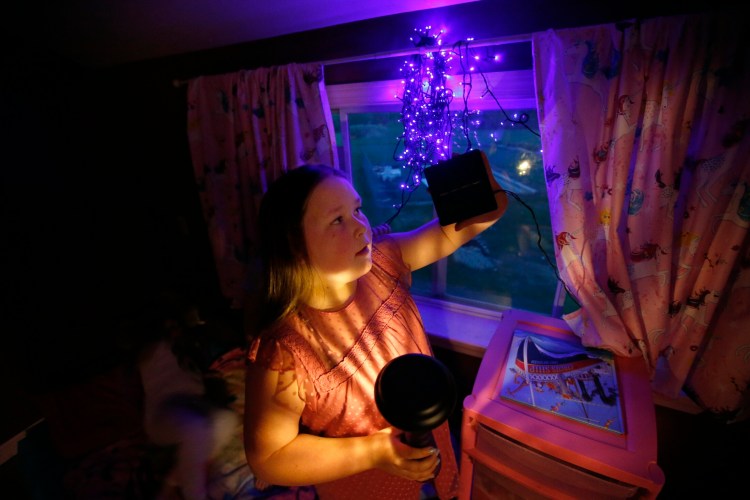When her electric bill doubled, Shanon Dixon didn’t know what to do.
The 54-year-old Waterville woman is disabled. Her five children were already grown, but she and her husband, Aaron, who works at Home Depot, had recently adopted three young nieces out of foster care who depended on them. The escalating CMP bill was threatening to overwhelm them.

“It was a struggle day to day,” Shanon said. “I was desperate. We had to live, so I got creative.”
The monthly electric bill for their small Cape had jumped from $110 or $120 in 2017 to $300 a month in 2018. After multiple phone calls, long waits and hang-ups, CMP suggested vague, costly solutions, such as replacing old appliances and rewiring the house. The Dixons couldn’t afford it.
Shanon had already abandoned the in-ground pool, a storage refrigerator and freezer, and all but one air conditioner. Instead, she and the girls spent summer days in the family’s old RV at the lake, evenings in their stand-alone screen house and used box fans to cool the house down at night.
They swapped out traditional electric lighting for solar-powered night lights, lanterns and fairy lights.
But all that ingenuity wasn’t paying off. When CMP suggested it might be the electric water pump, the Dixons adopted an “if it’s yellow, let it mellow” approach and stopped flushing the toilet after urinating. The family started showering at the local Boys & Girls Club.
The monthly bill is lower now, ranging between $150 and $180. The girls don’t mind the family’s cost-cutting measures – they love the fairy lights and summers at the lake – but Shanon said she’d rather flush the toilet more often and shower at home.
“Something doesn’t add up,” Shanon told state regulators last February. “I pray something is done.”
Send questions/comments to the editors.




Comments are no longer available on this story